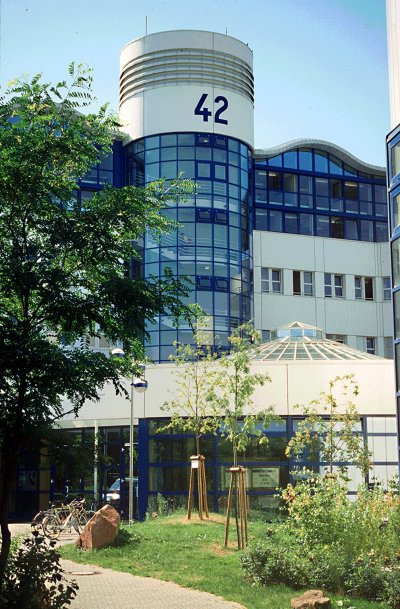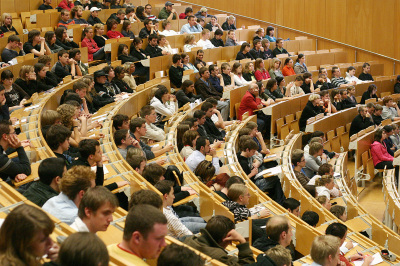Kaiserslautern on Facebook
On the official Facebook page of the city of Kaiserslautern, the press office posts relevant administrative topics but also other information about Kaiserslautern and life in the city.

Kaiserslautern's technical university, founded in 1970, is the only scientific-technical university in Rhineland-Palatinate. TU Kaiserslautern's campus currently accommodates approximately 10,100 students.

Gebäude 42 © Technische Universität Kaiserslautern
Future-oriented courses, practical training and a modern infrastructure: this is what students at Rhineland-Palatinate's only technical/engineering-oriented university have come to expect.
TU Kaiserslautern's "Excellence in Teaching" award – as one of six winning universities nationwide – is living proof of the importance of teaching at the university.
It is a campus university with around 14,200 students, offering over 100 future-oriented courses across 12 subject areas. Its compact size ensures close contact with lecturers and excellent support. With so many attractive courses – from biophysics, biological and chemical engineering and food chemistry, through to industrial mathematics – the TU has a lot to offer its students. Most courses follow an interdisciplinary approach, thus connecting various areas of expertise. Studying a MINT subject (mathematics, IT, natural sciences, technology) offers exciting career opportunities and, not least, good earning potential.

Audimax der TU Kaiserslautern © Technische Universität Kaiserslautern
The TU Kaiserslautern has a strong international reputation for research and teaching. Its repute in the fields of mathematics and computer science is also excellent. In addition, students and (up-and-coming) scientists benefit from the many internationally renowned research institutions, including two Fraunhofer Institutes, a Max-Planck Institute, the German Research Center for Artificial Intelligence and the Institute for Composite Materials, all of whom work closely with the TU in the field of applied research.
The science hub of Kaiserslautern is one of the largest IT clusters in Europe.
Two research centers have been established at TU Kaiserslautern, both of which have the objective of establishing large, coordinated research projects, for example, in special research fields.
The "Center for Mathematical and Computational Modeling" (CM)² research center works in the fields of development, application and improvement of mathematical models in engineering.
http://cmcm.uni-kl.de/
The "State Research Center for Optics and Material Sciences" (Optimas) deals with the interaction of light, spin (magnetism) and materials in various forms. The aim of this research center is the continued expansion of nationally and internationally recognized research and training structure at TU Kaiserslautern.
http://optimas.uni-kl.de